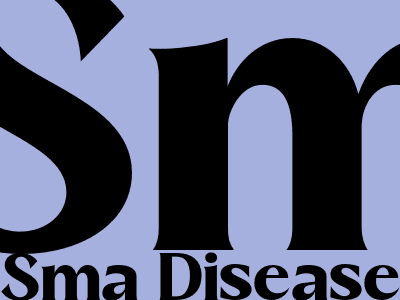A Comprehensive Guide to SMA Disease
An Overview of Spinal Muscular Atrophy
Spinal muscular atrophy (SMA) is a rare group of inherited genetic diseases that affect the nerve cells responsible for controlling muscle movement. SMA primarily affects the lower motor neurons in the spinal cord and brain stem, leading to progressive muscle weakness and wasting. It is estimated to affect approximately 1 in 10,000 to 1 in 25,000 individuals worldwide.
Types of SMA
SMA is classified into several types based on the age of onset and severity of symptoms:
- Type 0: Most severe form, symptoms begin in the womb or soon after birth, leading to limited movement and respiratory difficulties.
- Type 1 (Infantile SMA): Occurs in infants, characterized by severe muscle weakness, inability to sit or crawl, and respiratory issues.
- Type 2 (Intermediate SMA): Symptoms appear between 6 and 18 months, individuals may be able to sit but have difficulty walking and climbing stairs.
- Type 3 (Juvenile SMA): Onset typically occurs between 2 and 17 years of age, individuals have milder muscle weakness, can walk but may experience difficulty running and using stairs.
- Type 4 (Adult SMA): Symptoms develop in adulthood, characterized by gradually progressive muscle weakness and fatigue.
Causes and Genetics
SMA is caused by mutations in the survival motor neuron 1 (SMN1) gene, which is responsible for producing the SMN protein. The SMN protein is essential for the survival and function of motor neurons. Mutations in the SMN1 gene can lead to reduced production or absence of the SMN protein, resulting in the development of SMA.
SMA is inherited in an autosomal recessive manner, meaning that both parents must carry a defective SMN1 gene for a child to inherit the disease. If both parents are carriers, there is a 25% chance that each of their children will have SMA.
Symptoms and Diagnosis
Symptoms of SMA can vary depending on the type and severity of the disease, but may include:
- Muscle weakness and atrophy, particularly in the legs and arms
- Difficulty with movement, sitting, crawling, or walking
- Respiratory problems and swallowing difficulties
- Fatigue and muscle pain
- Scoliosis (curvature of the spine)
- Contractures (tightening of muscles and tendons)
Diagnosis of SMA involves a combination of genetic testing to identify mutations in the SMN1 gene, as well as neurological examinations to assess muscle strength and function.
Treatment and Management
There is no cure for SMA, but treatments are available to manage symptoms and improve quality of life. Treatment options may include:
- Nusinersen (Spinraza): An antisense oligonucleotide that increases SMN protein production.
- Onasemnogene abeparvovec-xioi (Zolgensma): A gene therapy that replaces the defective SMN1 gene.
- Risdiplam (Evrysdi): An oral medication that increases SMN protein production.
- Physical and occupational therapy: To improve muscle strength and function.
- Respiratory support: For individuals with respiratory difficulties.
- Scoliosis management: To prevent or correct curvature of the spine.
Research into new and innovative treatments for SMA is ongoing, with the aim of improving outcomes and quality of life for individuals affected by this condition.

Komentar